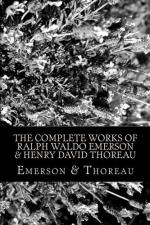|
This section contains 3,725 words (approx. 13 pages at 300 words per page) |

|
SOURCE: "Emerson's Theory of Poetry," in Poetry, Vol. XXII, July-August, 1931, pp. 263-73.
In the following excerpt, Gorely explores Emerson's method of poetic composition by referring to his journals and his essay, "The Poet. " She discusses the value that Emerson places on inspiration and truth as forces that guide the poet in rhythmical expression.
In the first essay of the series of 1844, [The Poet] Emerson considers the nature and function of the true poet. He begins his discussion with these words: "The breadth of the problem is great, for the poet is representative. He stands among partial men for the complete man, and apprises us not of his wealth, but of the common wealth." The significance of this thought can only be understood after a study of Emerson's theory of man. That is fundamental. Therefore, very briefly, the main lines of the doctrine must be indicated, especially man's relation...
|
This section contains 3,725 words (approx. 13 pages at 300 words per page) |

|


